-
作品名稱InnovTjulis Tray
-
作者謝承義、吳文敏
-
得獎年份113年
-
指導教授鄭仕弘、洪健翔
-
比賽名稱Red Dot Award:Design Concept 2024
-
主辦單位Red Dot
-
獎項名稱Red Dot Award
-
作品連結
台灣藜是台灣原住民的傳統穀物之一,排灣族稱其為 "Tjulis"。這種穀物富含澱粉、蛋白質、纖維和礦物質,是一種清淡且營養豐富的食物,適用於各種有益健康的烹飪。在台灣,多數原住民部落的農夫依靠人工種植和人工採收台灣藜,然而隨著年齡增長,他們的體力逐漸減弱。此外,台灣藜在收穫時植株高度可達 2 公尺,增加了採收的難度。為了方便人工採收,我們設計了 “InnovTjulis Tray”,並加入了台灣藜植株矮化技術。經過四個月的實驗,我們發現使用“Cut Root”方法可以有效矮化植株高度,同時保持植株枝幹質量和結穗的穩定性。為了確保切根前幼苗的強壯生長,我們使用精準育苗技術來培養,並改變了原有育苗盤的結構,增強了材料的可持續性和促進材料的再利用。InnovTjulis Tray 的存在是為了讓原住民部落的農夫們更用心地培育台灣藜的幼苗,並享受自己採收台灣藜的快樂時光。
Taiwanese quinoa, known as "Tjulis" by the Paiwan tribe, is one of the traditional grains of Taiwan's indigenous people. This grain is rich in starch, protein, fiber, and minerals, making it a light and nutritious food suitable for various healthy culinary applications. In Taiwan, most indigenous tribal farmers rely on the manual planting and harvesting of Taiwanese quinoa. However, as they age, their physical strength gradually declines. Additionally, during harvest, the height of Taiwanese quinoa plants can reach up to 2 meters, increasing the difficulty of harvesting.To facilitate manual harvesting, we designed the "InnovTjulis Tray" and incorporated a technique for dwarfing Taiwanese quinoa plants. After four months of experimentation, we found that the "cut root" method effectively reduces the plant height while maintaining good stem quality and ear condition. To ensure the robust growth of seedlings before root cutting, we used precise seedling cultivation techniques and modified the structure of traditional seedling trays, enhancing material sustainability and promoting material reuse. The InnovTjulis Tray aims to encourage indigenous tribal farmers to cultivate Taiwanese quinoa seedlings with care and enjoy the joyful experience of harvesting their own Taiwanese quinoa.

